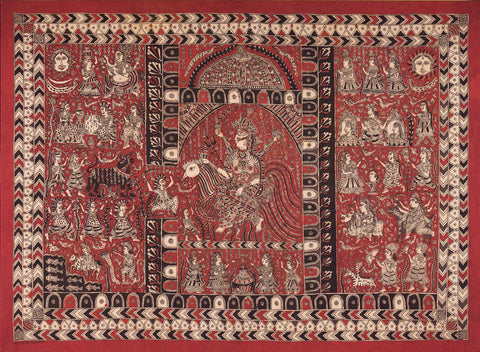Jagdish Chitara
Jagdish hails from a village called Aghar, near Ahmedabad. He was born in 1972 and was selling his painted wares on the streets when he was found by Gita Wolf of Tara Books for The Great Race.
Traditionally created by artisans from the nomadic Vaghari community in Gujarat, the Mata ni Pachhedi, these votive cloths offer a painted image of the goddess to herself. Gifting a piece of creation to the creator is considered the highest form of worship. Hand block-printed on textile, this limited-edition artists’ book is in the form of a cloth shrine. It pays tribute not only to a sublime conception of the power of art but also to the labour involved in creating it.
It is believed that the nomadic Devipujak community (Vaghari) of Gujarat belonged to a lower caste and were labelled as ‘untouchables’ due to which they were barred from entering temples and other religious places. They painted illustrations of the Goddess on a piece of cloth known as Mata Ni Pachedi, hung it behind the temple and directed their worship at the painting of the goddess. There are approximately 999 avatars of the Goddess which give rise to around 999 variants of the pachedi each narrating a different tale.
Traditionally red, maroon, black and white colours were used to paint the pachedis. Each colour has its own significance. Black wards off the evil, red is used to depict the goddess, maroon for mother earth and black and white are associated with purity.
His exhibit with us is titled Mata ni Pachedi, a natural dye on cloth made in 2021.





